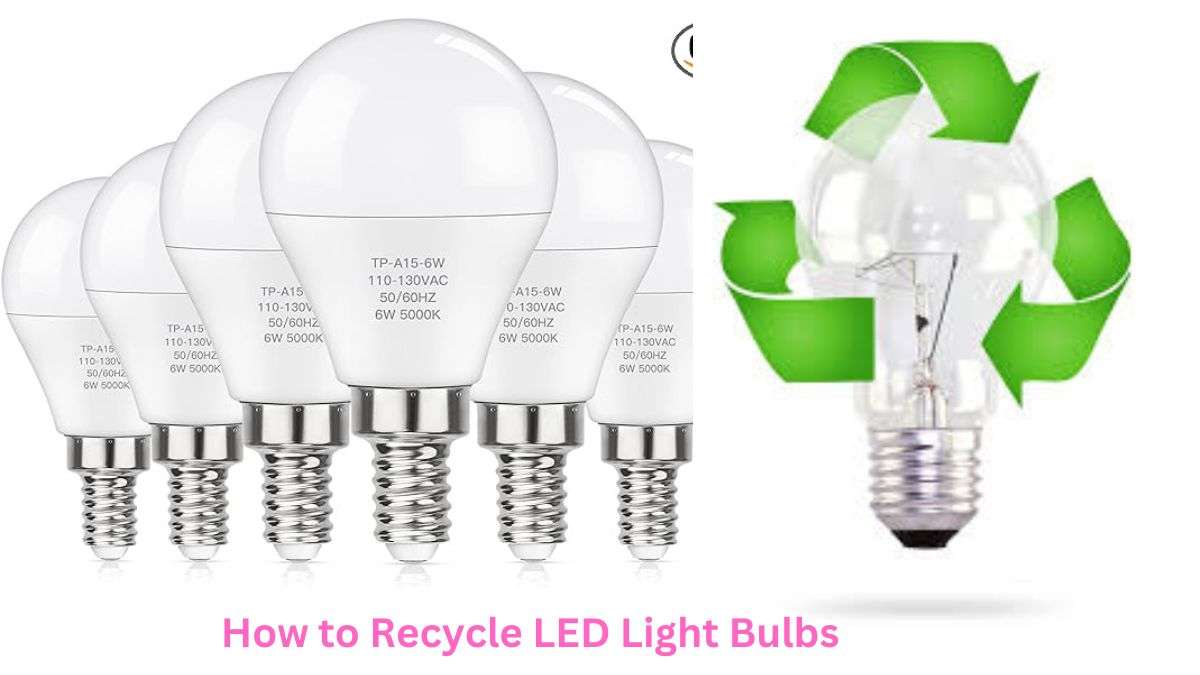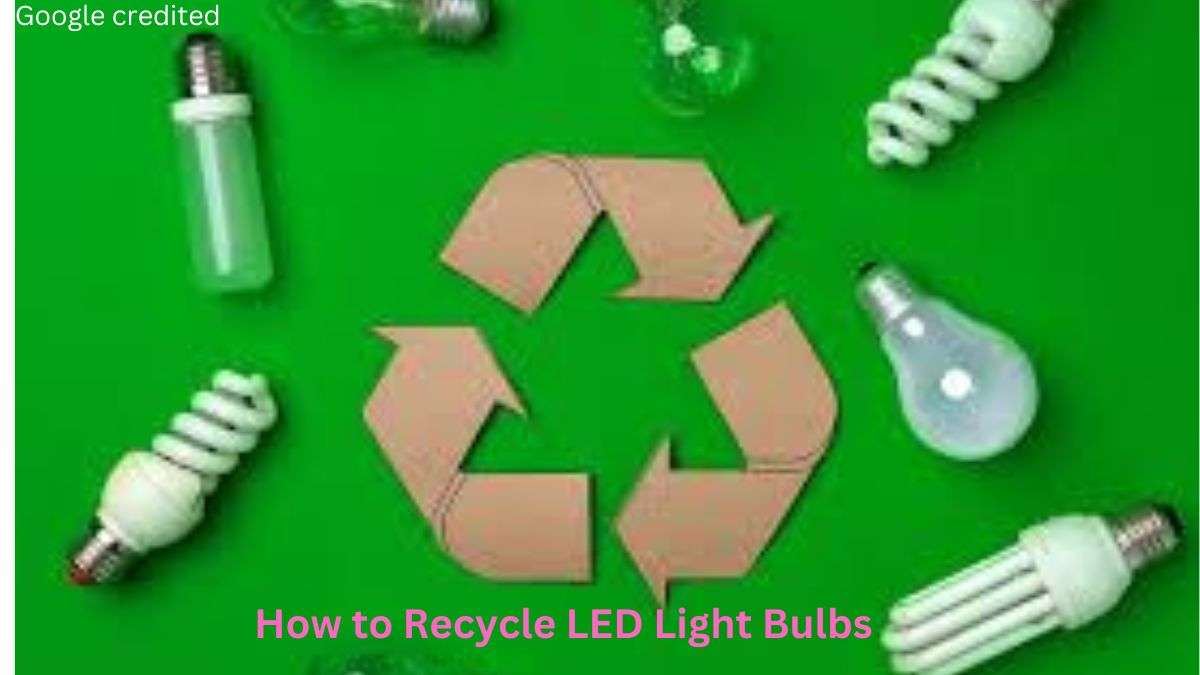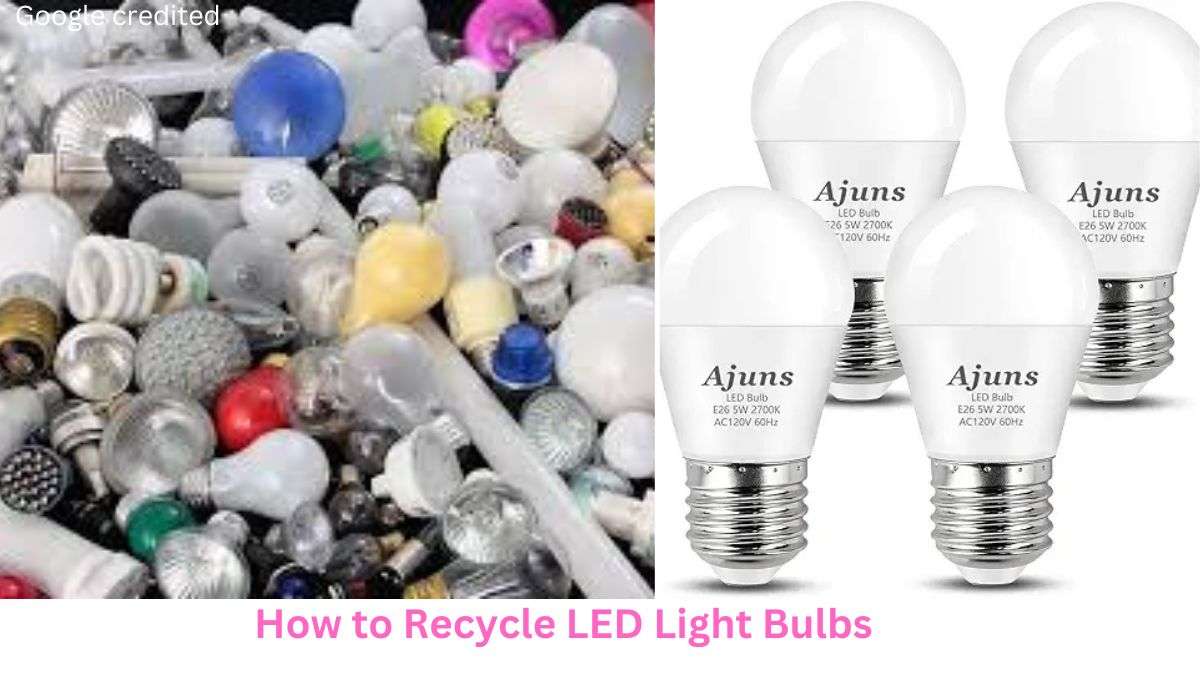Did you know that LED light bulbs contain valuable recyclable materials like aluminum, copper, and other electronic components? While LEDs have a remarkable lifespan—lasting up to 25 times longer than traditional bulbs—they still need to be disposed of correctly to protect our environment. After years of research on sustainable lighting solutions, We are here to walk you through the process of LED bulb recycling. Together, let’s ensure that your old LEDs don’t end up in landfills, where they could take centuries to decompose!

Understanding LED Light Bulb Components
LED bulbs aren’t just plastic and glass—they are a complex combination of materials, each with different recycling potentials. LED bulbs contain metals like aluminum and copper, plastics, and various electronic components that make them energy-efficient. Unlike traditional bulbs, such as incandescent and CFLs, LEDs don’t contain hazardous substances like mercury, but their electronic parts still require careful disposal.
Why is Recycling Important?
When LED bulbs are thrown away without proper disposal, their valuable materials end up in landfills, contributing to electronic waste. This improper disposal can have a lasting environmental impact, releasing harmful substances into the soil and water over time. Recycling LED bulbs recovers these valuable components, reduces electronic waste, and ensures these materials can be reused in future products.
Identifying Recyclable Components
Recyclable parts of LED bulbs include metals like aluminum and copper, along with plastics and other electronic components. Recycling facilities separate these parts for proper processing, contributing to resource conservation and environmental sustainability.
Preparing LED Bulbs for Recycling
Before recycling, it’s essential to prepare your LED bulbs properly to ensure safety and efficiency in the recycling process.
Safety Precautions for Broken or Damaged LEDs
LEDs contain small electronic components that can be hazardous if mishandled. Always handle broken bulbs with gloves to avoid cuts and injuries. Wrap damaged bulbs securely in paper or plastic before placing them in storage for recycling.
Steps to Remove Bulbs Properly
To remove an LED bulb from its fixture, ensure that the power is turned off. Unscrew the bulb gently, avoiding any force that might damage it or leave broken parts behind.
- Storing Used LED Bulbs
Store used LED bulbs in a secure container or box until you’re ready to recycle them. This protects the bulbs from further breakage and makes it easier to transport them to a recycling location. - Separating Different Types of LEDs
If you have various types of LED products, such as strip lights or specialty bulbs, consider storing them separately. This helps streamline the recycling process, especially if specific facilities or programs specialize in certain types of LED components.

LED Recycling Options and Programs
Fortunately, there are several convenient options for recycling LED bulbs, whether you’re handling them from a household or business perspective.
Local Hardware Store Programs
Many hardware stores, like Home Depot and Lowe’s, have in-store recycling programs for LED and other light bulbs. Check with your local store to see if they accept used LEDs and follow their specific drop-off guidelines.
Municipal Waste Management Services
Some municipalities offer electronic waste recycling days or ongoing collection programs that accept LED bulbs. Contact your local waste management office to find out if LED recycling is available in your area.
Mail-In Recycling Programs
Several companies offer mail-in recycling options for LED bulbs. You can package your used bulbs and send them to designated recycling facilities. This can be especially useful if you live in an area without accessible recycling locations.
Specialized Electronics Recycling Facilities
Dedicated electronics recycling centers handle more than just light bulbs. They specialize in the disposal of electronic waste, including LED components, and ensure environmentally friendly handling and processing.
Best Practices for LED Disposal
Recycling LEDs doesn’t have to be complicated, but it’s helpful to follow a few best practices to make the process as smooth as possible.
Common Mistakes to Avoid
Avoid mixing LEDs with regular household trash, as this often results in them ending up in a landfill. Also, don’t place LEDs with other types of bulbs, such as CFLs, without confirming that your recycling location can handle them.
Proper Packaging for Transportation
When transporting bulbs to a recycling center, pack them securely in a box or bag to avoid breakage. If recycling in bulk, document the bulbs by type to make sorting and processing easier for the recycling facility.
Documentation for Bulk Recycling
If you’re recycling LEDs in large quantities, check if the recycling program requires any documentation. This is often required for businesses that regularly dispose of LED products.
Business vs. Residential Recycling
For businesses, consider working with specialized recycling programs that offer bulk LED recycling services. Residential recycling can often be handled at local facilities or through convenient drop-off locations at hardware stores.

Benefits of LED Bulb Recycling
Recycling LED bulbs isn’t just about reducing waste; it has multiple benefits for our environment and economy.
Material Recovery and Reuse
We can recover important metals like copper and aluminum by recycling LED lights. This reduces the need for mining and helps create a sustainable cycle where materials are reused in new products.
Environmental Impact Reduction
When LEDs are recycled, they stay out of landfills, reducing the risk of soil and water contamination. Proper disposal minimizes electronic waste, which is crucial for reducing the environmental impact of discarded electronics.
Energy Conservation
The recycling process uses significantly less energy than extracting raw materials. By choosing to recycle, you’re conserving energy that would otherwise be spent on new material production.
Economic Benefits of Recycling Programs
LED recycling contributes to the economy by supporting jobs in the recycling industry and reducing costs for companies that produce lighting products. Recycling programs also make it more affordable to obtain materials for new LEDs, creating a positive economic cycle.
Conclusion
Recycling LED light bulbs is easier than you might think! By following these guidelines and utilizing available recycling programs, you’re not just disposing of old bulbs—you’re contributing to a more sustainable future. Remember, every properly recycled LED bulb means fewer harmful materials in our landfills and more resources recovered for future use. Ready to make a difference? Start by checking your local recycling options today!
Common Questions about Recycling LED Light Bulbs
1. Can I Recycle LED Light Bulbs in My Curbside Recycling Bin?
Typically, no. Most curbside recycling programs do not accept LED bulbs because they contain electronic parts and metals. It’s best to take them to a designated recycling center or e-waste collection site.
2. Can You Throw LED Light Bulbs in the Trash?
While LED bulbs are generally less hazardous than CFLs, it’s still not recommended to throw them in the trash. Recycling ensures that valuable materials are recovered and that the bulbs don’t end up in a landfill.
3. Are LED Light Bulbs Household Hazardous Waste (HHW) Like CFL Bulbs?
No, LED bulbs are not considered hazardous waste. They don’t contain mercury, which is present in CFLs, but they still have valuable materials that are best recovered through recycling.
4. Is It Against the Law to Throw Away LED Light Bulbs?
Regulations vary by location, but in some areas, it may be illegal to dispose of LEDs with regular trash due to their electronic components. Always check your local disposal regulations.
Related articles:
- Why do LED bulbs continue to glow when turned off
- Why Do Led Bulbs Go Out? Understanding The Reasons and Solutions
Hi, I’m Malik Suhail—an SEO expert, web designer, and passionate blogger with 2 years of experience. I specialize in crafting content that is not only informative but also tailored to meet the needs of my readers.
I write about diverse topics, always striving to simplify complex ideas and provide valuable insights that resonate with my audience. Whether it’s about SEO strategies, web design trends, or blogging tips, I am committed to delivering well-researched, practical, and easy-to-understand information.
My mission is to help readers navigate the digital world with confidence and clarity. I believe in adding value through authentic content that inspires action and delivers results.


